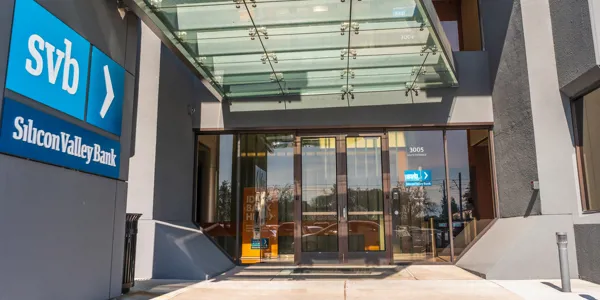Is Silicon Valley Bank a canary in the coal mine?
This article looks at the situations surrounding the Silicon Valley Bank collapse and what it means for markets in the short term.

The news that Silicon Valley Bank (SVB), the 16th largest bank in the US, had collapsed will bring back painful memories. The banking crisis of 2008 was a tough period for investors, and most would rather not repeat the experience. However, the problems of the US bank are likely to be specific to the company rather than a systemic issue.
Undoubtedly, SVB’s collapse is a major failure. It operated in 13 countries, including the UK, and had around $173 billion in deposits1. It has been a key deposit holder and provider of funding to the Silicon Valley start-up community, and small businesses have been concerned that they may not be able to get their money out.
The US banking authorities were sufficiently worried about potential contagion that they acted swiftly to shore up confidence in the system. A rescue package thrashed out over the weekend means customers of Silicon Valley Bank and Signature Bank, which was also closed, will have access to all their deposits. A new facility was created to give banks access to emergency funds and the Federal Reserve announced measures to make it easier for banks to borrow from it in emergencies1.
Will the US authorities’ support package be enough to prevent problems spreading?
Markets have been jittery, even after the announcement of the US authorities’ package of support measures and news that HSBC would buy the UK operations of the bank for £12. The S&P 500 dropped 1.45% on 10 March as the problems emerged3. UK large companies also proved vulnerable, given the high weighting in the banking sector, falling 2% in early trading on 13 March4.
Unsurprisingly, the financial sector proved most vulnerable, with Barclays, HSBC and Lloyds, plus asset management companies such as abrdn and M&G seeing their share prices tumble4. Market sentiment had already taken a hit earlier in the month when Federal Reserve chairman Jay Powell reiterated his commitment to higher interest rates5.
Is Silicon Valley Bank's collapse a 'Financial Crisis 2.0'?
This does not appear to be the Global Financial Crisis 2.0. Silicon Valley Bank was unique: its business model focused on venture capital. It had phenomenal growth, growing assets and deposits by more than 200% over the past four years6, but it also left it uniquely vulnerable to a change in the cost of borrowing.
Venture capital thrived during the period of easy money, when interest rates were low and liquidity was abundant. However, as interest rates rose, the long-term fixed-rate securities in which many of the bank’s deposits were invested in, lost money. Earlier in the week, the bank had announced the sale of some of its more liquid securities at a $2 billion loss and tried to raise further equity. Investors became concerned about the bank’s liquidity position.
These fears were compounded by a second problem: SVB deposits were very concentrated in a few large accounts. The Federal Deposit Insurance Corporation (FDIC) insures deposits of up to $250,000. For SVB, $152 billion of its $173 billion (88%) in deposits were above the FDIC insured limit. This compares to around one-third for the average US bank2. This meant that when there was a hint of trouble at the group, depositors scrambled to get their cash because they knew they didn’t have FDIC protection. This was the catalyst for the closure on Friday.
Larger banks in the US and Europe are subject to far more extensive regulation, which makes a similar situation for them almost impossible. Basel 4 regulations in Europe, for example, set limits on interest-rate exposure, plus strict capital adequacy rules. Rules around liquidity management and stress testing also provide a safety net, while most banks also have a far more diverse depositor base.
There will be small areas of impact. For example, start-ups may find it difficult to find new and flexible lenders. However, for Evelyn Partners clients, the impact is minimal. Regulators have worked extremely hard to ensure that there can be no repeat of the Global Financial Crisis in 2008 and for the most part, we believe, they have been successful.
Sources:
1 After SVB failure, US acts to shore up banking system confidence, Reuters, 13 March 2023
2 HSBC buys Silicon Valley Bank’s UK unit for £1 in rescue deal, Financial Times, 13 March 2023
3 U.S. Markets, MarketWatch, marketwatch.com [accessed 13 March 2023]
4 Refinitiv / Evelyn Partners
5 Bank ETFs fall amid concerns over SVB and ‘crack’ in financial system after rate hikes, , MarketWatch, marketwatch.com, 10 March 2023
6 Silicon Valley Bank - One bad apple doesn't spoil the bunch, Algberis Investments, 10 March 2023
This article is solely for information purposes and is not intended to be and should not be construed as investment advice. Whilst considerable care has been taken to ensure the information contained within this article is accurate and up to date, no warranty is given as to the accuracy or completeness of any information and no liability is accepted for any errors or omissions in such information or any action taken on the basis of this information. The opinions expressed are made in good faith but are subject to change without notice.




